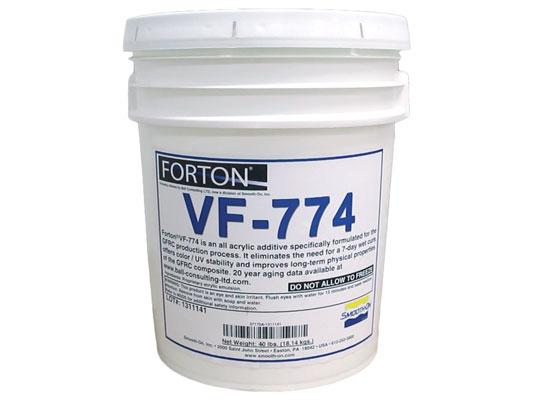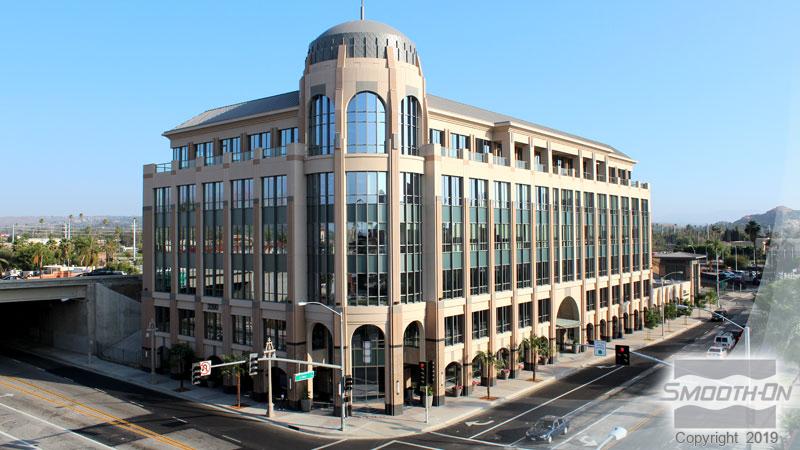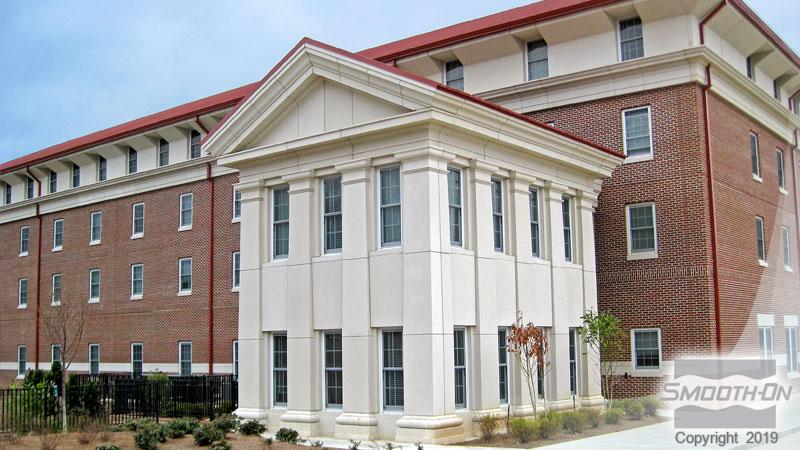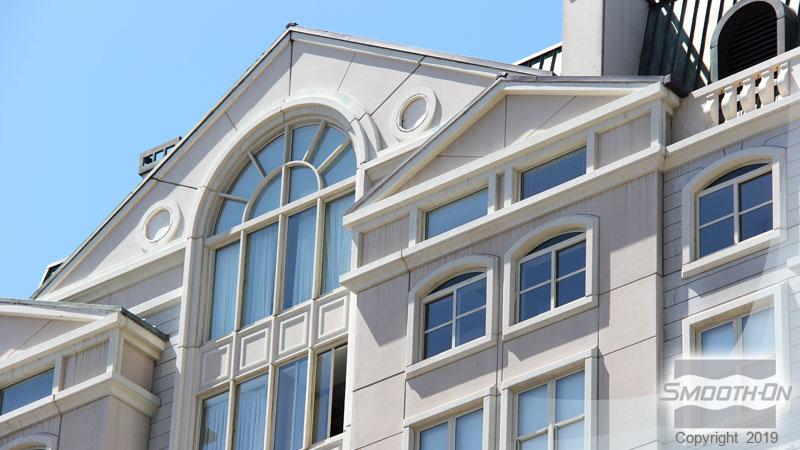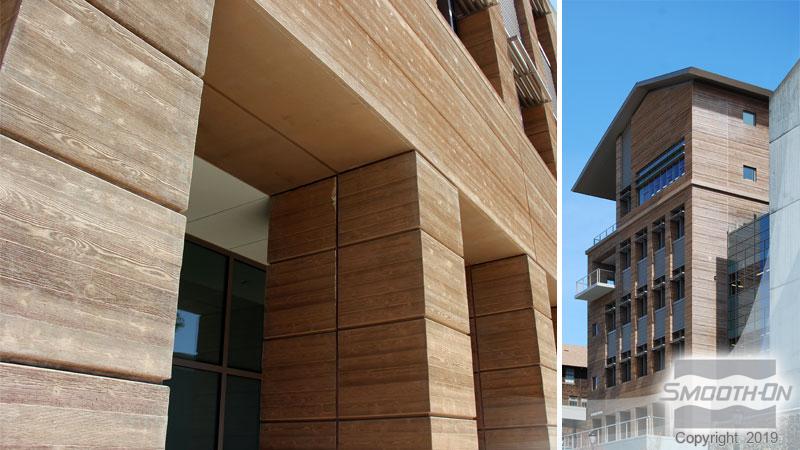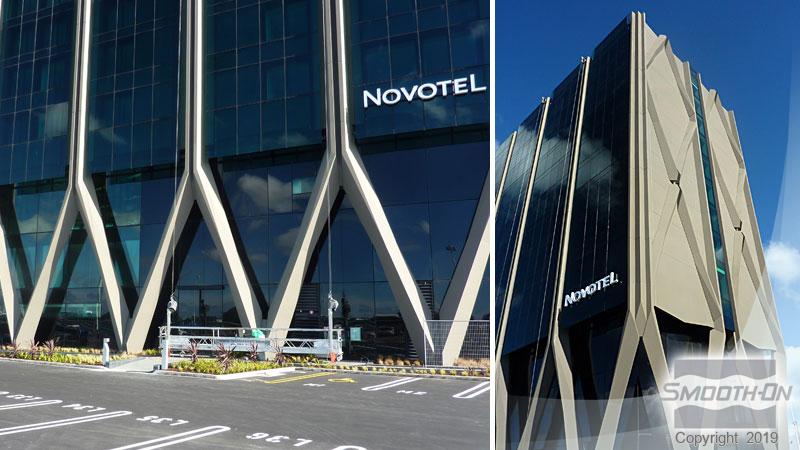Forton™ VF-774
Forton™ VF-774 is an all acrylic, co-polymer dispersion (51% solids) specifically formulated for the GFRC production process. VF-774 is UV stable. It is further formulated to be stable and durable in the high pH Portland cement-based GFRC composite.
Features
The Primary Benefits of Using Forton™ VF-774 are:
• Elimination of the seven day wet cure required to achieve the maximum strengths of the GFRC composite.
• Significant improvements in the long-term durability of the GFRC composite, especially the maintenance of the long-term flexural strain to failure property, i.e. ductility of the composite.
Click to Read the 20 Year Durability Paper ›
View the GFRC Frequently Asked Questions ›
Other Advantages to Using Forton™ VF-774:
• Improved workability of the mix at low water/cement ratios, further enhancing the strength of the cured cement matrix.
• Easy spraying of vertical surfaces without having the face mix sag.
• Complete dispersion of iron oxide pigments for batch-to-batch color consistency of face mixes.
• UV stability of the Forton™ polymer means architectural finishes maintain their “as produced” colors.
• Hard cured face mixes for better sand blasting uniformity.
• Tighter, denser cured product, which reduces absolute moisture absorption and vapor permeability while at the same time significantly reducing the rate of absorption as a function of time.
• Elimination of crazing and spider cracking in the face mix due to the soft polymer particles in between the cement particle and the sand grain.
PCI Compliance: Forton™ VF-774 complies with Appendix G of MNL 130, the Manual for Quality Control for Glass Fiber Reinforced Concrete Products from the PCI for the elimination of the seven day wet cure.
Instructions
HANDLING & STORAGE - Forton™ VF-774 is supplied in 5-gallon pails (40 lbs/18 kgs), 55-gallon drums (480 lbs/218 kgs) and totes (2,300 lbs/1,043 kgs). VF-774 should not be allowed to freeze. Recommended storage temperature range: 50°F - 100°F (10°C - 38°C). VF-774 should be stored in closed containers out of direct sun light and away from direct sources of heat.
SHELF LIFE - Shelf life of VF-774 is one year in unopened containers when properly stored. Smooth-On cannot guarantee shelf life of opened or repackaged units. Important: This product has limited shelf life. Use as soon as possible after opening.
PRE-MIXING - VF-774 can separate over time in storage or transit as evidenced by caramel liquid on the surface. Gently stir with a paddle for 30 seconds. Pre-mixing one time per 24 hour usage cycle is recommended.
MEASURING & MIXING - Assemble all components and accessories before you begin.
Required Materials:
- Portland Cement, Type I (White or Gray)
- Silica Sand (washed, graded, dried. 0 Retention on 20 mesh sieve)
- Forton™ VF-774
- Water
- Plasticizer (see recommendation based in Technical Bulletin)
- AR Glass Fiber (see recommendation based in Technical Bulletin). Important: Do not use “E” Glass
- Pigments - UV Stable, Iron Oxide (liquid or dry, if required)
- Weighing Scales- with digital gram accuracy (do not use postal scale, dietary scale, etc.)
- Mechanical / Power Mixer: 5 - 10 hp vertical high shear mixer or CS Unitec handheld MG120, MG140 or MG160 blades
- NIOSH Approved Dust Mask to minimize dust inhalation while using components
- Mixing Containers
Important: Components should be mixed in proper sequence. Standard concrete mixers may be used, but it is recommended to use a high shear mixer specially designed for GFRC to ensure a thoroughly mixed, lump free slurry is produced.
Step 1: Weigh or batch all materials.
Step 2: Add all liquids, including VF-774 and 2 oz. of plasticizer, to mixer.
Step 3: Start mixer on slow (300-500 rpm).
Step 4: Add pigment if used.
Step 5: Add sand.
Step 6: Add cement and increase mixer speed to high (1,000-1,800 rpm).
Step 7: Mix for 1 - 2 minutes.
Step 8: Add the remaining plasticizer to achieve desired workability.
Step 9: Reduce mixer speed to slow (300-500 rpm) and gradually add fiber (Premix only) until dispersed (typically not more than one minute). Important: Mixing too long or at too high a speed after fiber has been added can filamentize or damage the fiber, resulting in placement issues and reduced strengths.
APPLYING A RELEASE AGENT - Common mold materials include mold rubber, melamine coated board and birch faced plywood or FRP with tooling resin gel coat. Use a high quality release agent meant for releasing architectural concrete such as Crete-Lease 20 VOC to release GFRC castings from the mold.
Casting - Pour mixture in a single spot at the lowest point of mold, and let mixture seek its level. Vibrating: After casting, consolidate the slurry and remove entrapped air using a vibrating table or hand vibrator.
Spraying - For higher volume of smaller parts or making large cladding panels, GFRC slurry can be sprayed into molds using rotor/stator or peristaltic pumps specifically designed for GFRC. Regardless of spray pump used, a face coat without fiber is typically applied first. After the face coat has properly stiffened, a fiber backup mix is applied in multiple passes, with proper compaction following each pass. For low volume application - A hopper gun (Kraft EZY Deck Pro is recommended) can be used to apply face mix. GFRC back up mix can be applied by hand.
Curing - After placement, cover GFRC with plastic tarp / sheeting to prevent excessive moisture loss and maintain heat of hydration to ensure a proper initial cure. Let cure in the mold for 12-16 hours. Curing temperatures should be maintained above 50°F/10°C in order to ensure proper film forming of the VF-774.
Related Categories: Polymer Modifiers for Concrete and Gypsum
Related Series: Forton™ – Additives for GFRC and Alpha Gypsum, Forton™ VF-774 – Acrylic Co-Polymer For Use In GFRC
How-To Articles
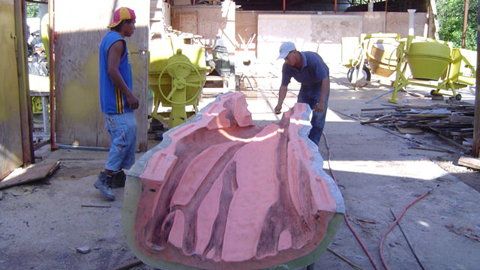
How To Create a Rebound™ 25 Mold to Cast a GFRC Banyan Tree
Pretecno engineer Jose Hormiga developed a way to bring an organic feel to some of the company's latest building projects.
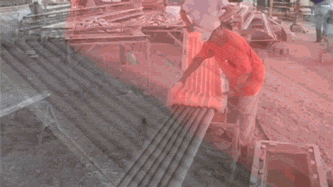
How To Cast a Concrete Fence Which Exhibits Detail Never Seen Before
Unique mold making process quickly generates 11,880 lightweight concrete panels...
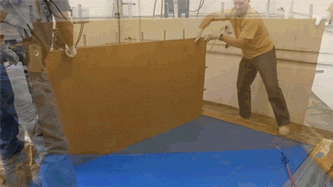
How To Make GFRC Textured Shower Panels
Multiple GFRC panels of different sizes and shapes will be made from this single texture mat mold.
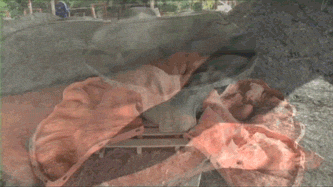
How To Create a GFRC Table using Rebound™ 25 Silicone Rubber
Creating a GFRC table design employs the root of a Royal Poinciana tree recovered from a hurricane.
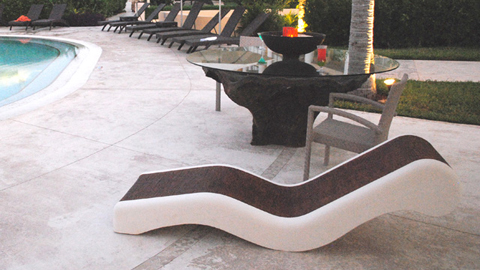
How To Create a GFRC Lounge Chair Using Rebound™ 25 Silicone Rubber
Using Rebound™ 25 mold rubber, OBRaTUR, S.A. has created a line of GFRC furniture that is hurricane proof.
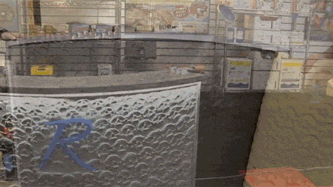
How To Spray GFRC To Create a Showroom Kiosk
In this video we show the step-by-step process for creating a sales desk kiosk with a custom textured surface using GFRC enhanced with Forton® VF-774.
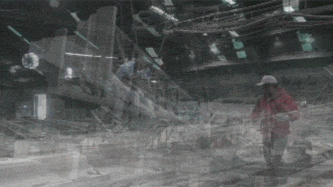
How To Create a GFRC Architectural Cornice
GFRC Cladding Systems shows how to create a spray-up cladding cornice.
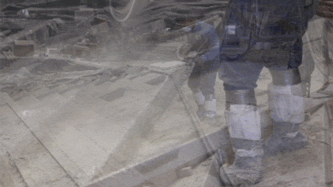
How To Create an Angular GFRC Architectural Panel
GFRC Cladding Systems creates angular panels to be installed on a building in Miami's design district.
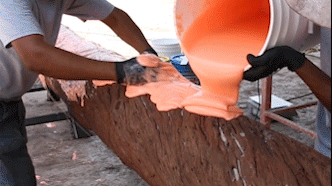
How To Make Decorative GFRC Panels from a Jungle Tree Trunk
"Taller de Prefabricados" invited us to their facilities to film their mold making process
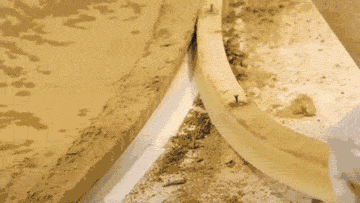
How To Build a Concrete Bar Using GFRC Panels ‑ Episode 3
Learn how to make unique edge molds for concrete countertops using TASK 16 urethane rubber.
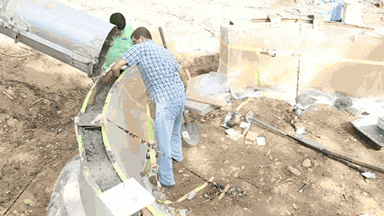
How To Build a Concrete Bar Using GFRC Panels - Episode 2
Learn how to make an outdoor bar and pergola, using Art Deco GFRC panels.
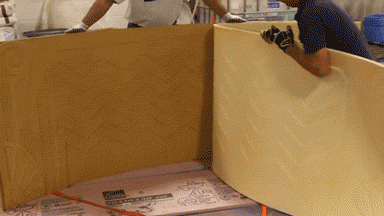
How To Build a Concrete Bar Using GFRC Panels - Episode 1
Learn how to make Art Deco concrete panels from model design to casting pigmented GFRC.
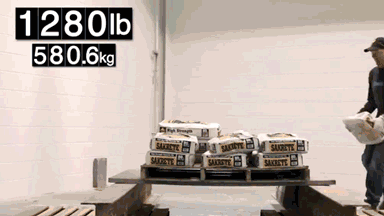
How To Make a Custom Concrete Countertops using GFRC
Learn how to make extremely strong concrete countertops with Forton® VF-774
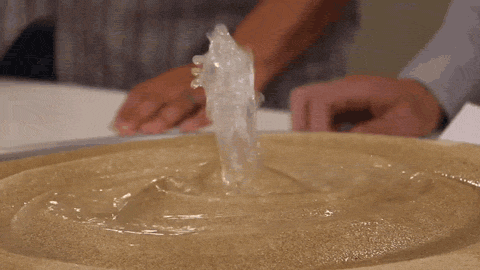
How to Make a Custom Concrete Fountain
Learn how to make a concrete fountain that looks just like sand using Mold Star® 16 silicone rubber.
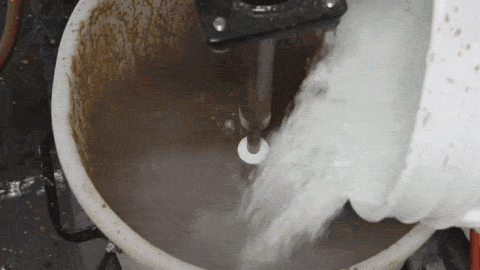
GFRC Explained - Learn the Basics of GFRC
We explain the different components, mix designs and the proper techniques needed to create high-quality GFRC
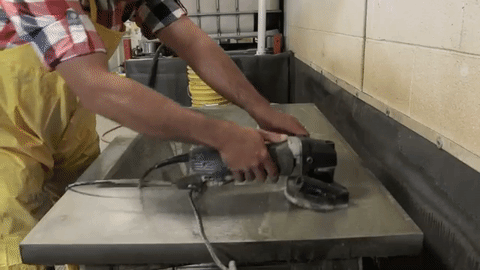
Shop Projects - How To Make a Concrete Utility Sink
In this video we show you how we made a concrete utility sink for our shop using Forton® VF-774.
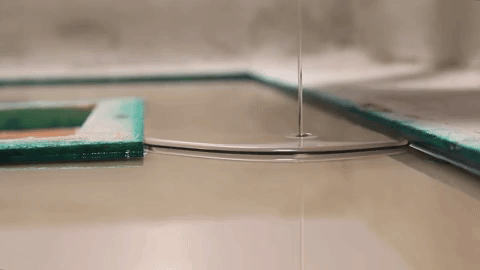
How to Make a Concrete and Epoxy Lagoon Aquarium Table
Learn how to use concrete in combination with clear epoxy resin to create an aquarium table.
